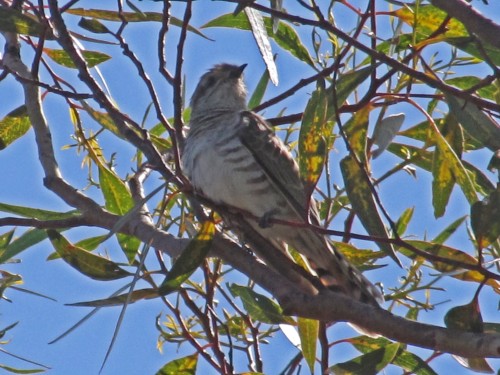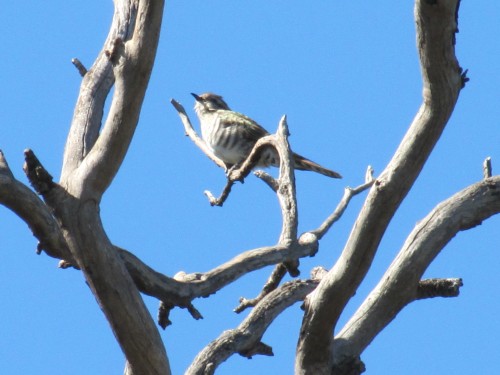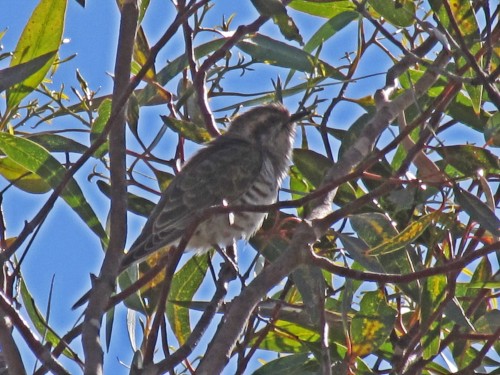Spring – where are you?
It is supposed to be spring here in southern Australia.
The calendar says so, but the weather is not cooperating. Since the beginning of “spring” at the start of September, the weather has been anything but spring-like. In fact, it has been decidedly wintery for the whole month. And August was no better. This year both August and September (so far) have been like the winter we didn’t have earlier on. We had more than double our monthly average rainfall in August and this month looks like going the same way.
To be fair – the earlier months this year were very dry. Large parts of South Australia were heading for a drought, along with other parts of eastern Australia which are still in severe drought. The farmers need all the rain they can get to establish their crops and pastures. The environment also needs the seasonal rains. During the earlier parts of winter, we had very cold nights and lovely sunny days. Now we still have very cold nights – and cold showery days as well. It hasn’t been good weather to get out birding.
A sign of Spring on the way?
A few days ago – on a brief few moments out in the garden between showers and wind gusts – I managed to both hear, and then get good views of, a Horsfield’s Bronze-cuckoo (see photo above). This species spends autumn and winter in the north of Australia and migrates south to breed around this time of the year.
The 14 species of cuckoos present in Australia are parasitic breeders. They lay their eggs in the nests of other birds, including thornbills, wrens and a range of other species. The parent cuckoos leave all the incubation, feeding and raising of the young to the host species. You could say that they have perfected the art of “out-sourcing” parenthood.
Further reading:
An early Horsfield’s Bronze-cuckoo
I meant to write this post about two weeks ago. I have been distracted by other things; it happens.
First thing one morning just on two weeks ago I was on my way out and I heard the distinctive call of a Horsfield’s Bronze-cuckoo. I was running late for a meeting so I didn’t have time to track it down and get a photo but I know its call from years of hearing it around our home and garden. The photos I have shared today were taken some time ago and are not brilliant, but they give you a general idea of the appearance of this species.
What was interesting about this record is the early nature of the visit in late June. Most of the cuckoos we see and hear on our property are later in the year, especially around spring time when many species are nesting. I have also been reading quite a few reports online by other birders of various cuckoos appearing in southern Australia in recent weeks. One field guide I consulted claims that this species migrates to southern Australia and breeds from June to March, so it is not really all that early after all.
Sometimes I wonder if our birds actually read the field guides and follow the instructions therein.
Spring is coming
I think spring must be on its way here in South Australia.
After one of the wettest and coldest winters on record the sunny days have arrived.
And so have the cuckoos.
Over recent days we have had a Horsfield’s Bronze-cuckoo calling from various spots in our garden. This is always a good indicator that many of the other species are preparing to breed – or already have their nests ready for the spring breeding season.
The various cuckoos which visit our garden will lay their eggs in the nets of weebills, thornbills, honeyeaters and a range of other species as the opportunity arises.
Other species I have recorded over the years include:
- Pallid cuckoo
- Shining Bronze-cuckoo
- Fan-tailed cuckoo
Spring is on the way – and so are the cuckoos
Earlier this week I was sitting on our back veranda doing some reading – and enjoying the lovely sunshine. After many weeks of gloomy, drizzling weather it was wonderful to soak up some warmth.
My reading was suddenly interrupted by the distinctive call of a Horsfield’s Bronze-cuckoo. I looked up and saw this bird perched near the top of a nearby mallee tree. (The branches are dead because they have been ring-barked and subsequently killed by two Galahs chewing the bark.)
I raced inside for the camera and managed a few reasonable photos before it flew off, probably looking for an unsuspecting host to care for its eggs and young. Like most cuckoos in Australia (and elsewhere), this species is parasitic, meaning that they lay their eggs in the nests of other species. Around our garden this probably means the nest of a thornbill.
The unsuspecting host pair hatch the cuckoo’s egg and then feed the young cuckoo. The young cuckoo will even tip the other young birds out of the nest – and thus get all of the food.
Since hearing this bird I’ve heard others in the district, so the spring/summer breeding season is definitely on the way.
Related articles:






